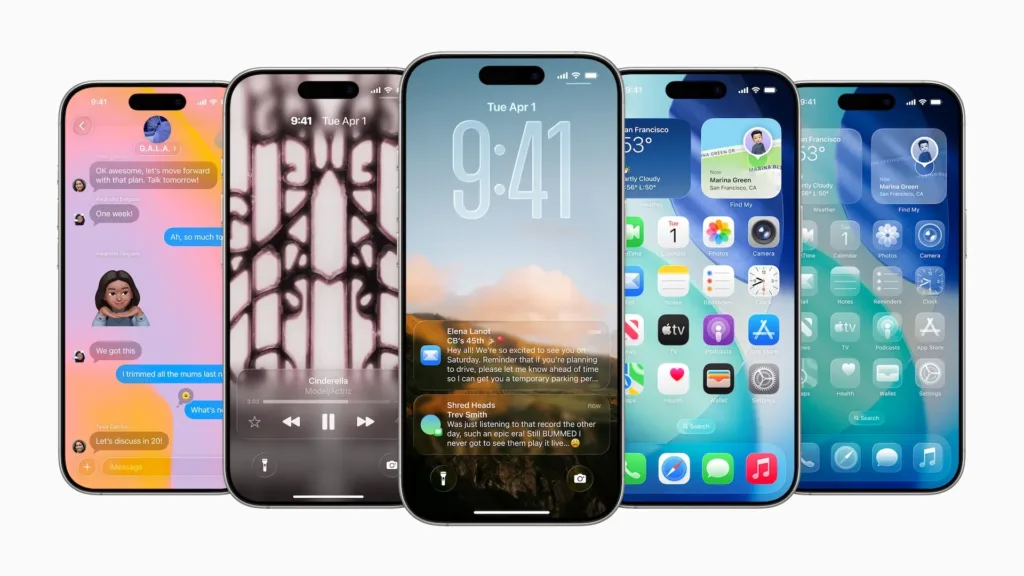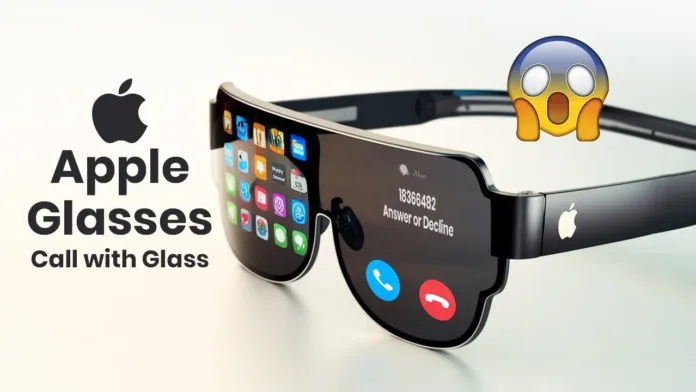The Article Tells the Story of:
- Apple Quietly Prepares for AR Glasses Through a Bold iOS Redesign – Liquid Glass, Apple’s sleek new interface, looks simple—but it signals something far bigger.
- Vision Pro’s Design Lives On, Even If the Headset Doesn’t – Though the Vision Pro didn’t sell well, its interface now powers Liquid Glass.
- AR Glasses Could Arrive Sooner Than Expected – Reports suggest Apple’s smart glasses may launch in 2026. Liquid Glass trains users to adapt now.
- Apple Enters the AR Race Against Meta and Google—Quietly, But Deliberately – With Meta’s Ray-Bans and Google back in the game.
Table of Contents
Apple Pushes Liquid Glass to Preview AR Glasses
Apple introduced its most dramatic software design update in over ten years at WWDC 2025. The company unveiled “Liquid Glass,” a new visual theme that changes how users interact with the iPhone interface. Developers and users are connecting this update to a much bigger product reveal expected in 2026—Apple’s rumored AR glasses.
Read More About Our Article of WWDC 2025 Launches with iOS 26, Apple Intelligence Updates, and a New Solarium Interface Published on June 11, 2025 SquaredTech
The Liquid Glass design closely mirrors the user interface of the Vision Pro headset. Though the Vision Pro didn’t become a major hit, Apple seems to be using lessons from that experience to shape future wearable products. The shift from traditional flat UI elements to glass-like windows points to a more immersive and spatial computing experience.
Liquid Glass treats every app window as a transparent layer—like a sheet of glass—with a slightly reflective surface. This design approach gives the screen a cleaner, more modern feel. However, in the current developer beta, the feature still needs polish. Issues like how the transparency reacts to background content still appear unresolved.
Read More About Our Article of AR Glasses Tech in 2025: Google Takes on Meta’s Ray-Bans Published on December 26, 2024 SquaredTech
Still, this new direction gives a clear sign: Apple is getting ready to move its software closer to hardware that supports mixed or augmented reality. That likely means the Apple AR glasses are real—and on the way.
Liquid Glass Borrows from Vision Pro’s Interface

While Liquid Glass introduces transparency and reflections to iPhones, the concept itself first appeared with the Vision Pro. That $3,500 headset, which launched earlier, didn’t gain much commercial traction. It was expensive and didn’t offer must-have functionality for the average user. But the software design of the Vision Pro was more successful. Its interface avoided making users feel isolated from their environment.
Instead of throwing users into a virtual bubble, the Vision Pro overlaid apps and content on the real world. This use of mixed reality made the experience feel less artificial. Now, Apple is bringing that same design thinking to iPhones—and possibly AR glasses.
If Apple can shrink the mixed reality experience into a lightweight wearable, the software must evolve first. Liquid Glass could be Apple’s way of introducing users to how future interfaces will behave on AR glasses. Users would see notifications, widgets, or content as transparent overlays, not as blocks that interrupt their view.
This new design choice seems like a test run to teach users how future screens will look—lighter, layered, and embedded into their surroundings.
Apple Prepares to Compete with Meta and Google
Apple isn’t alone in chasing AR glasses. Meta already launched Ray-Ban smart glasses with built-in cameras and microphones. Google has returned to developing its own smart eyewear projects. These products show that AR glasses are no longer futuristic dreams—they’re arriving soon.
Apple needs to enter this market to stay competitive. But Apple also needs to do it with the design edge it’s known for. That’s where Liquid Glass comes in. The company has always set itself apart with its modern aesthetic, and Liquid Glass continues that tradition.
According to Bloomberg’s Mark Gurman, Apple’s upcoming AR glasses will include cameras, speakers, and microphones—features that match Meta’s Ray-Ban models. Siri will also be integrated into the glasses. This means users could answer calls, control music, ask questions, and get spoken directions without needing to use their hands.
Apple’s visual overlays might also include turn-by-turn navigation, real-time translations, and message previews. For these elements to feel seamless, the design must avoid blocking the user’s real-world view. Liquid Glass suggests Apple is already working on these presentation layers—where information appears lightly on top of real life, not as big, bright interruptions.
This style would give users a way to stay informed without losing awareness of their surroundings. That design goal fits perfectly with the purpose of AR glasses.
Liquid Glass Hints at the Future of iPhone and AR
Liquid Glass may start as a design refresh on iPhones, but it’s more than a cosmetic update. It reveals Apple’s strategy for AR product design. If notifications and apps begin to feel like glass windows—even on phones—that same logic can apply directly to wearable devices.
The timing also supports this theory. Analysts expect Apple to announce its AR glasses in 2026. A major iOS design shift in 2025 gives users a year to get used to this new style before Apple introduces the product that truly needs it.
Apple has already shown its interest in building toward immersive experiences. The Vision Pro showed what was possible. Now Liquid Glass bridges that visual language back to Apple’s mainstream devices. The glasses are the next step.
Nothing is confirmed about the AR glasses yet. Apple hasn’t officially announced them. But every move the company makes—hardware or software—suggests they are close.
Liquid Glass is more than just a design update. It’s Apple’s way of preparing users for what comes next.
Final Word
Apple is laying the foundation for AR glasses through Liquid Glass. This design shift combines software innovation with clear hardware direction. If the pattern continues, iPhone users today are getting a glimpse of what Apple’s wearable future will soon look like.


